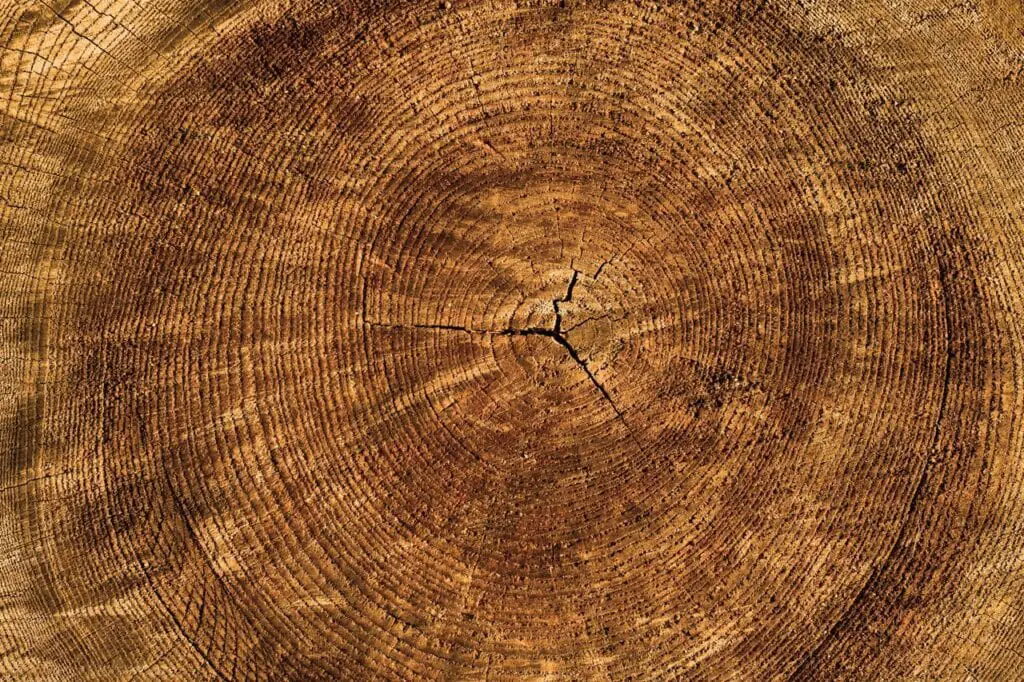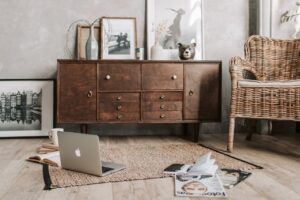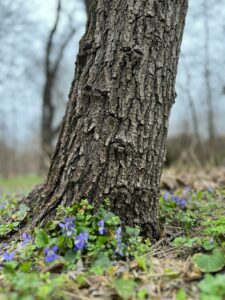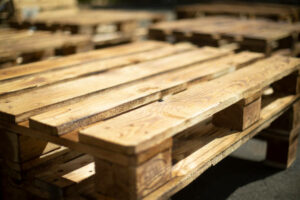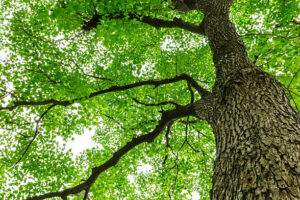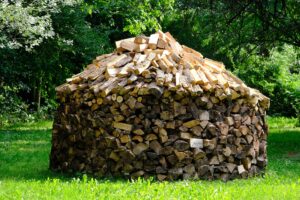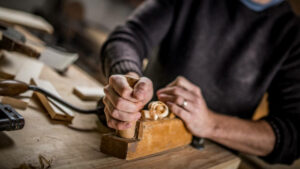There are hundreds of different hardwood species that can be used for furniture, cabinetry cabinets, interior trim, flooring, and decorative accents. These woods range in color, density, and grain pattern from the warm brown tones of cherry and alder to the dark brown tones of walnut and mahogany.
Hardwoods are the products of deciduous trees that lose their leaves in autumn, in contrast to gymnosperm (coniferous) plants that have needle-like foliage year-round. The hard, dense, and durable nature of hardwoods makes them ideal for high-impact structures and surfaces that must last a long time.
Hard Maple
Hard maple is a premium hardwood that provides woodworkers with an excellent combination of beauty and durability. Its lustrous grain and density make it perfect for hardwood flooring, furniture, cabinetry, musical instruments, millwork, and alternative-turned objects. Its strength and durability make it one of the hardest domestic wood species, with a Janka hardness rating of 1450. Because of its dense, tough construction, hard maple is much harder to work with than soft maple or other species but still yields premium results to experienced woodworkers with the right tools and techniques.
The hardness and strength of maple make wood makes it one of the most versatile woods to work with in both hand and machine tool applications. It cuts, turns, sands, and machines easily but is a little bit more difficult to glue than softwood due to its higher density. It can also blotch when staining and requires a pre-conditioner or gel stain to achieve an even color.
Unlike most hardwoods, hard maple is primarily used for its sapwood rather than its heartwood. The sapwood of oak is a paper white to off-white cream color that can show some light reddish tones and mellows with age. In contrast, the heartwood of hard maple is a medium brown-ish-red color that mellows with age.
As with all hardwoods, the grain of maple is usually straight with a fine texture. However, figured maple is also common and can be beautiful in its own right. Examples of figured maple include curly, wavy, fiddleback, and quilted patterns. Some of these figurative grains occur naturally and are found in other species and types of hardwood, but a few figure varieties are the result of abnormal growing conditions such as fungus or insect infestation (Spalted Maple).
The wood of the Sugar Maple tree, which is the most common form of hard maple, is commonly used for basketball courts, dance floors, bowling alleys, and skating rinks. It is also tapped and made into maple syrup. To tell the hardwood lumber of maple from soft maple on the end grain, look for skinny and wider rays in a sanded and cleaned (10x magnification) view of the end grain.
Soft Maple
Maple is often categorized as soft, but it’s one of the harder hardwoods. Soft Maple is a versatile wood that’s commonly used in secondary lumber, but it’s coming into its own for fine furniture making and architectural millwork. Its strength and beauty make it a desirable material. Soft Maple is a dicot tree that can be found in several varieties. In general, it is 25% softer than Hard Maple.
Red Oak is another durable species of hardwood. This wood is found throughout North America and can be identified by its unique coloration and medullary rays. It has a high Janka rating and is known to be quite durable right hardwood.
Birch is a common species of hardwood that’s a member of the Aspen family. Its light coloring and fine graining are beautiful in any application. Its flexibility and tensile strength make it easy to work with. It also holds a stain very well. Birch can be identified by its swirling, lightly wavy pattern of grain lines.
Hickory is a popular American hardwood that’s known for its incredible strength. It’s been used in baseball bats and other turned items because of its durability. It’s hard to find, but it’s a favorite among woodworkers because of its rich, chocolate-colored tones and reduced photosensitivity.
Pine is another popular softwood that’s typically sold in home improvement stores and lumberyards. It’s soft and flexible, but it can be carved and shaped well. It has a beautiful grain with light coloration and can be carved to create stunning patterns and designs. It’s also extremely affordable, which is why it’s a great choice for beginners or those on a budget.
Teak is a more exotic type of hardwood that’s grown in the tropical regions of Asia. It’s a durable wood that has a beautiful, deep reddish brown color and is known for its high strength and water resistance. It’s expensive, however, because it requires a long time to mature. It’s a great option for those who want to add a unique, beautiful touch to their home or office. It’s also a good choice for exterior applications, like decking and shingles.
Hickory
Hickory is one of the most commonly used domestic hardwoods for cabinetry, furniture, and flooring. It is also a favorite for tool handles, wooden ladders, and dowels due to its strength and durability. Hickory flooring is known for its attractive rustic aesthetic, and it is a sturdy flooring choice for high-traffic areas of the home. Its moisture resistance and strength are a plus in homes with children, pets, and active lifestyles.
Like oak, hickory is a hardy wood that holds up to heavy foot traffic and resists scratching and denting. This strength makes hickory ideal for entryways, living rooms, and other common areas in homes where families are always moving around. It is also a good choice for high-traffic commercial applications.
The most common types of hickory are pignut, shellbark, and shagbark hickory. The pignut species is native to the Eastern United States and is well known for its strength and shock resistance. It has a dark color that lends a rugged appearance to furniture and other items. This tough hardwood is also a scratch-resistant option for flooring.
While not as strong as hickory, shellbark hickory is still very durable and often used for tool handles, cabinets, and furniture. Its light brown color and straight grain combine to create the furniture with an appealing look. This versatile utility wood also has a moderate Janka hardness rating and responds well to steam bending.
Although it is not as strong as hickory, shagbark hickory is an excellent choice for flooring because it is very dense and hardwood lumber has a straight grain that resists warping. Its shock resistance and bending properties make it a popular choice for tool handles general construction and sporting goods. This hardy wood has a low toxicity level, but it is an allergy symptom trigger for some people.
The wood’s pores are small and tight, which is why hickory is known for its durability. While hickory is not as water-resistant as some other species, it is still an excellent choice for high-traffic areas of the home. It is also a good choice for humid climates because it does not expand and contract as easily as softwoods.
Walnut
Wood is one of the oldest and most versatile materials available. It has been used since the dawn of man, and it is still an integral part of many of our most treasured objects and structures. This natural, renewable resource offers a remarkable combination of strength, durability, and beauty. Whether you’re looking to build a new table or create a piece of art, walnut wood is the right choice for your project.
Walnut trees are native to eastern North America, and they produce a gorgeous, chocolate-colored hardwood. The black walnut wood’s distinctive color and grain pattern make it a favorite among furniture makers. This wood can also be found in flooring and paneling. The unique color and wood pattern of walnuts can be a challenge to match when staining, so it’s important to choose the right type of white walnut and stain.
This hardy tree is a dense, heavy hardwood that is well-suited to furniture and cabinetry. It is also moisture-resistant and durable. Black walnut has a wide range of grain patterns, from straight to swirling “bird’s-eye” designs. Its rich brown color and good working qualities are why it’s so popular among American woodworkers.
To avoid a costly mistake, it’s important to understand the difference between red oak and walnut and other dark, soft hardwoods. Woods such as ebony, mahogany, and Brazilian walnut are similar to white oak, in appearance, but they have very different Janka ratings and woodworking characteristics.
Another common example of a soft wood that’s erroneously classified as a hardwood is balsa. Balsa is a hardwood list is considered a hardwood by some woodworkers, but it has an extremely low Janka rating and is flimsy and easy to work with.
In addition to providing a variety of colors and grains, hardwoods offer durability, strength, and moisture resistance. Unlike softwoods, hardwoods are typically grown in deciduous forests. This means they shed their leaves in the fall and grow new ones in the spring. To thrive, these trees must have an ideal climate, including soils that are rich in nutrients. To ensure that they grow and harvest properly, these forests must be maintained at the proper temperature and humidity.
